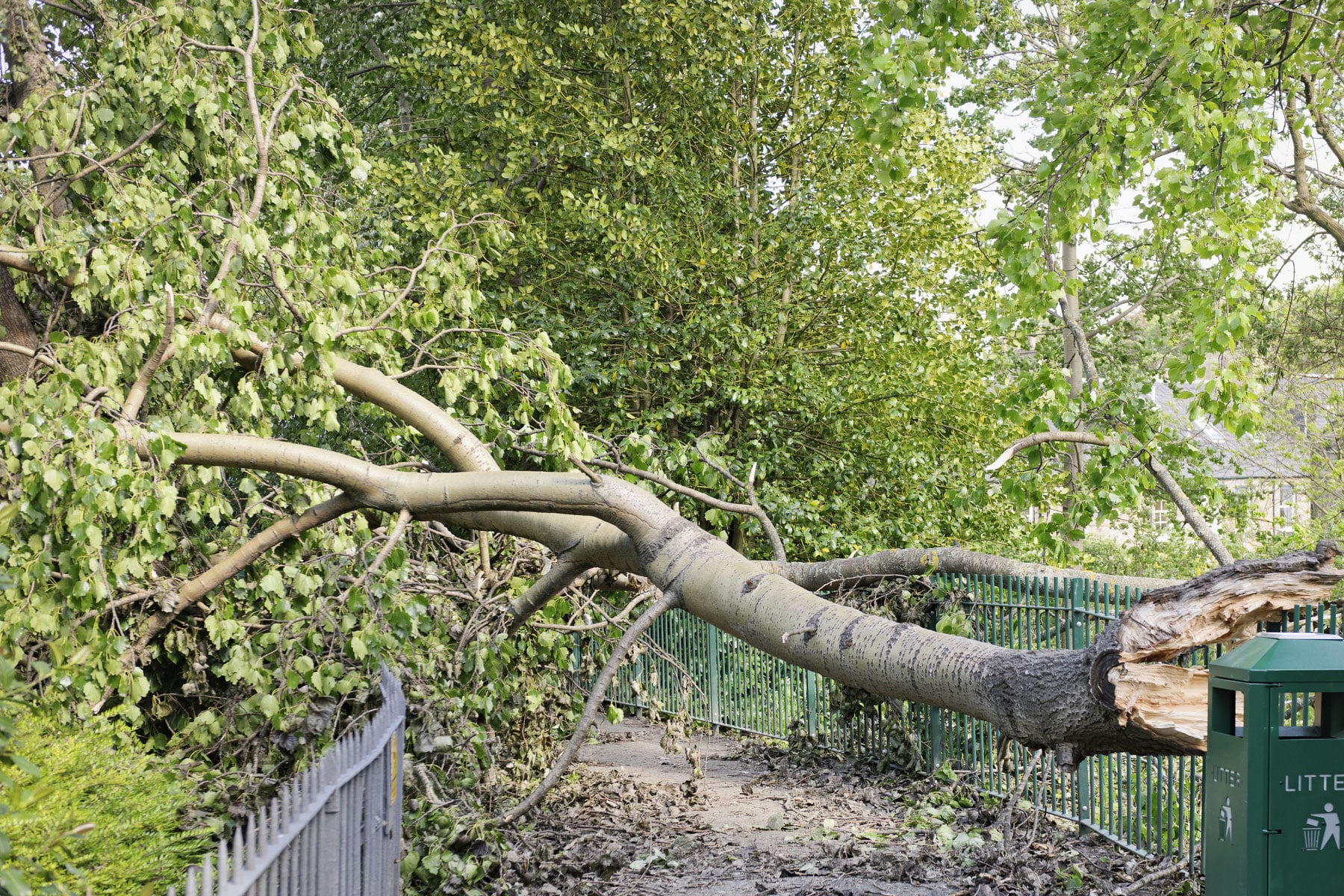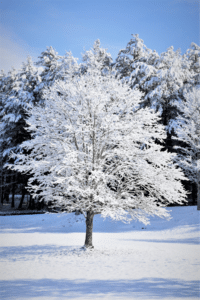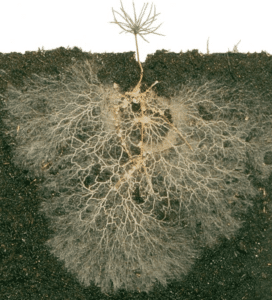
1. Inspect your trees for any weak or damaged branches
If you have any damaged branches, it is best to remove them before they cause further damage to your tree. This will protect your trees against storms.
The urgency will be dependent upon where the tree is. Whether it hangs over a road, pavement, house, or drive. In these instances the consequences of a branch falling and damaging either person or property are great.
Research is important
when it comes to tree work. You must ensure that you are taking the right action, as some tree work can be very dangerous and even life-threatening.
If you have a lot of trees, you may want to consider hiring a professional tree service. Having a tree survey done can give you peace of mind about what does and doesn’t need to be done to make your trees safe.
A professional tree service will have the knowledge and experience to safely carry out any work.
2. Trim any branches that are too close to your home or power lines will protect your trees against storms
Remove any dead or dying branches
Cut back any branches that are rubbing against each other
If you have a large tree, have it professionally trimmed every few years to prevent damage
Check for any insects or diseases and treat accordingly
Never top your trees! This is detrimental to their health and can cause them to become unstable.
Regularly check your trees or have them checked every two years for any signs of damage or stress
Water your trees during dry periods
Be aware of the tree roots! They can cause problems for your home’s foundation, sewer lines, and pavements. If you have a problem with tree roots, you may need to have the tree removed.
3. Mulch around the base of your trees to protect them from extreme weather conditions
Mulching around the base of your trees is one of the best ways to protect them from storms and pests. By creating a barrier between the soil and the tree, you can help to prevent damage from both hot and cold temperatures, as well as keep away harmful insects and other creatures. Be sure to use a thick layer of mulch, and replenish it regularly to ensure your trees are well protected.
Roots need to be protected.
They are the storehouses of a tree’s strength and energy. If roots are damaged, the whole tree may be weakened or even killed.
A tree’s roots are usually underground, out of sight. But they spread far and wide, often much farther than the tree’s branches. The size and spread of a tree’s roots depend on the tree’s size and type. Some tree roots can grow more than 100 feet (30 meters) from the trunk!
Most tree roots are not very deep. The roots need to be close to the surface to get oxygen from the air. They also need to be close to moisture in the soil. The tips of tree roots are always growing. As they grow, tree roots push against rocks and other things in the ground. This can cause cracks in pavements and walls.
Keep the trunk safe protect your trees against storms
The trunk is the main part of the tree. It carries water and nutrients from the roots to the leaves. The leaves make food for the tree. The trunk also supports the branches. A tree can live even if its roots are damaged. But it may not be able to grow very tall without a strong trunk. A tree’s immunity is not like ours, its immunity is the trunk once it is exposed to outside elements it is vulnerable to pests and disease.
The other thing to consider is the life of the tree is the cambium. The cambium is the thin green line you see just inside the trunk if this is damaged the life of the tree is damaged. This will protect your trees against storms.
Pests and diseases can weaken or even kill a tree. To help keep pests and diseases under control:
– Inspect your trees regularly. Look for signs of pests or disease, such as holes in the leaves or strange spots on the bark.
– Keep your trees healthy by giving them the right amount of water and fertilizer. Healthy trees are better able to resist pests and diseases.
– Prune your trees regularly. This will help keep them strong and healthy.
– Dispose of dead branches and leaves promptly. Dead plant material can harbor pests and diseases.
Call a professional if you see signs of serious pest or disease problems. Some pests and diseases can spread quickly and be difficult to control. A professional can help you identify the problem and choose the best way to deal with it. This will protect your trees against storms.
4. Install tree straps or braces to keep them from being blown over in high winds
Regularly check trees for dead branches and have them removed.
If you have fruit trees, pick the fruit as soon as it ripens to avoid attracting pests.
Keep the area around your trees free of debris and weeds. This will help prevent pests and diseases from taking hold.
Trees are an important part of our world. They provide us with oxygen, shade, and beauty. They help to protect our environment and make our world a better place. By taking care of trees, we can help to ensure that they will continue to do all of these things for generations to come.
5. Water your trees regularly, especially during times of drought
. Watering your trees during times of drought is important to maintaining their health. Make sure you give them enough water so that their roots can stay hydrated and healthy.
6. Check on your trees after storms have passed to make sure they are still standing and have not been damaged
Crown thinning and crown reduction can improve your tree’s structure by keeping the canopy balanced. Before the upcoming winter season is a great time to schedule your pruning service.
https://www.trees.org.uk/Help-Advice/Help-for-Tree-Owners/Managing-your-Trees

More on storms on another of our pages:
Captivating Factors of Storm Damage – Roots and Shoots Manchester









